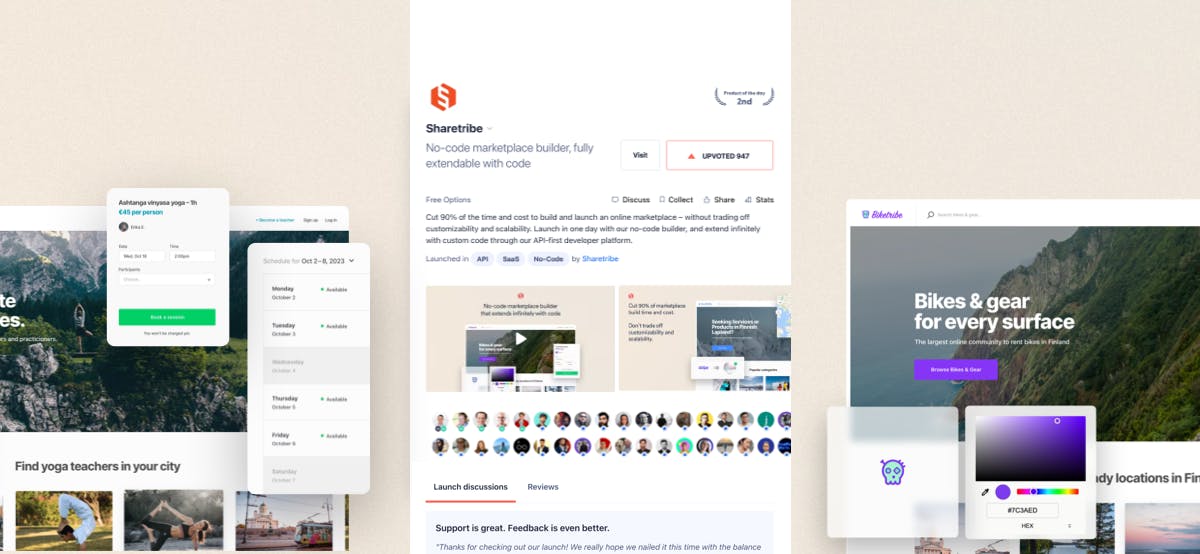Sharetribe is profitable again: From 2.5 years of decline to record growth
Why Sharetribe stopped growing in 2021 and how we turned things around in 2024—and why all this matters.
Feb 21, 2025

In mid-2021, Sharetribe stopped growing. For the next 2.5 years, our revenue declined.
By the end of 2023, we were burning more than €40k every month. It was the scariest time in Sharetribe’s history. I saw a high likelihood of layoffs in 2024.
Instead, in 2024, we turned things around.
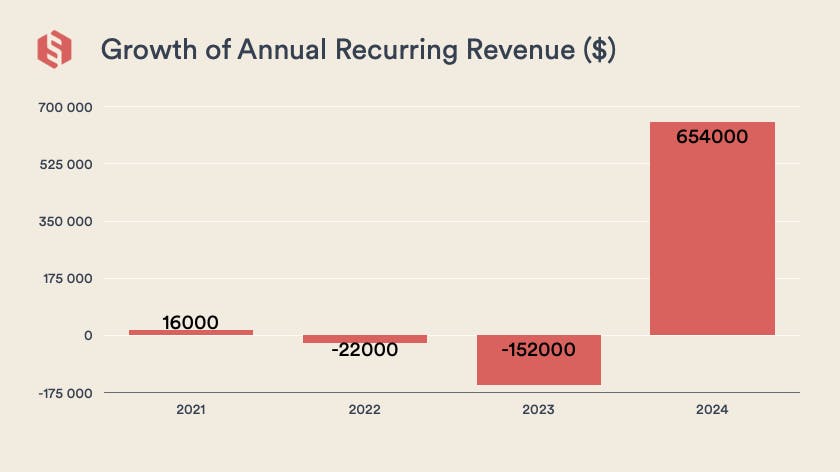
Last year, we added a total of $650k to our annual recurring revenue. Our main goal for the year was to become profitable again, and we reached it in April. No layoffs happened. By many measures, 2024 was the best year in the 13-year history of our company.
In this article, I’ll explain more about the reasons behind this decline and how we overcame it. I’ve previously shared more on this topic on LinkedIn and I welcome you to join the discussion there.
The trouble begins
Our first product, Sharetribe Go, was launched in 2014. It empowered thousands of non-technical, bootstrapping founders to follow their dreams and launch their own marketplace.
But after a few years, we started noticing a troubling pattern: when the time came to scale their business, founders hit the limits of Go. They had to leave Sharetribe and rebuild their platforms from scratch, at a significant cost.
To combat this challenge, we built a new product from scratch. Sharetribe Flex was launched in 2018. It didn’t have any no-code elements, but it was infinitely extendable. Our thinking was that founders who outgrew Go could now continue to their next stages with Flex.
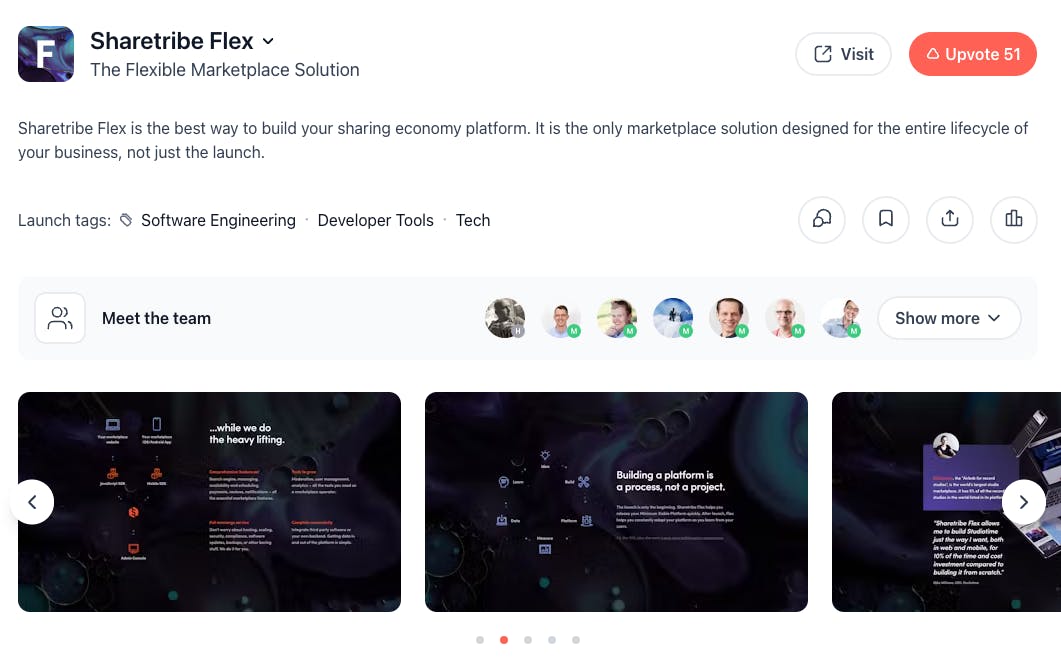
This worked for a while, and Flex saw strong growth. Many of our biggest customers today, such as Swimmy, Drive Lah, and LandTrust, launched with Flex in 2018 or 2019.
However, we again began to notice a core problem.
For most founders, Flex was too difficult to get started with. If you weren’t technical, you needed a minimum budget of $5k to launch your first version. And 90% of our audience were non-technical founders. We realized that Flex was only serving a small minority of the audience we wanted to serve.
The COVID-19 pandemic boosted our growth for a while. Many people whose lives and livelihoods had been disrupted were looking for new business opportunities they could launch quickly and easily without leaving their homes. Marketplaces were an obvious candidate, as was Sharetribe Go, which required no upfront investment or coding skills to get started.
But by early Q1 2021, it had become clear that the boost had been artificial and temporary. Many of the Sharetribe Go customers who had started in 2020 churned, and Flex’s growth was slowing down.
In the second half of 2021, our revenue started declining.
The new Sharetribe – the big bet
When we launched Sharetribe Go in 2014, we already had a vision for its future. It was purely a no-code builder, but eventually, it should be extensible with code.
We abandoned this idea in 2016, when it turned out that the architecture my co-founder Antti and I had built for Go wasn’t up for the task. Instead, we built Sharetribe Flex.
Initially, we decided against the new Sharetribe. Such a massive project would require us to bet our entire business on a wildly uncertain outcome.
When trouble started in 2021 and we realized our two-product approach wasn’t working, we dug up our old vision: a no-code product that’s API-powered and extensible, built on top of the Flex developer platform.
Initially, we decided against it. Such a massive project would require us to abandon all other growth initiatives and bet our entire business on a wildly uncertain outcome.
For a moment, we didn’t know what to do. We discussed focusing on the enterprise market, which, purely from a business standpoint, would likely have been the right choice. But our mission is to democratize platform ownership. We’re in this business to empower founders to build new, sustainably operated platforms, and an enterprise focus would contradict that purpose.
By the end of 2021, our revenue was steeply declining, and three long-time employees—including our CTO—had left Sharetribe. This was a watershed moment.
At the end of 2021, we decided to take the bet and start developing the new Sharetribe.
The decline accelerates
2022 was grueling. We were busy building the foundations of the new Sharetribe, but it took a long time before we had anything to show our customers. We shipped very little functionality that year.
To our customers, it seemed like we were neglecting both our products. Sometimes, they were quite vocal about this, as you can see in the image.
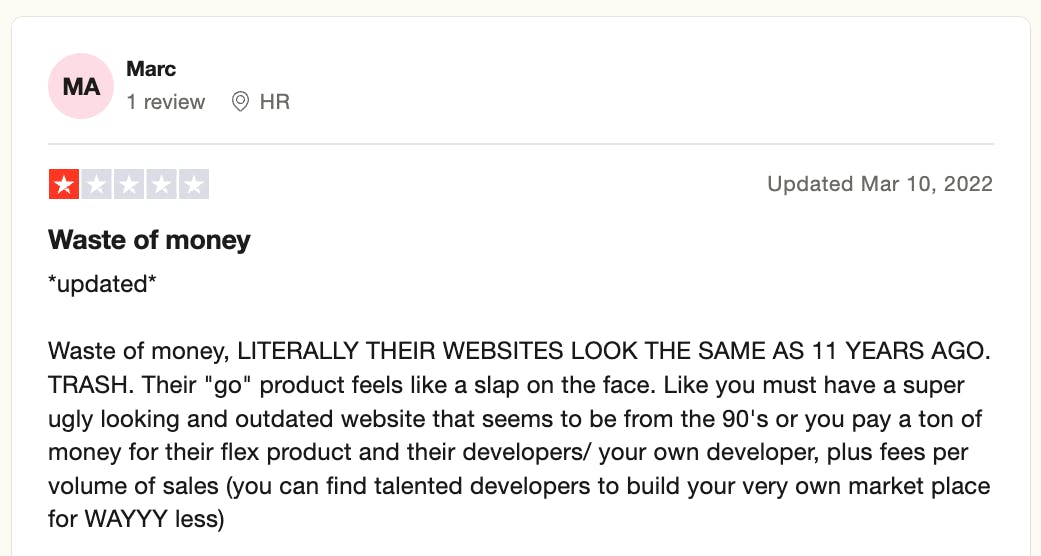
Marc exaggerates a bit, but there’s a kernel of truth: Go still looked like it did in 2013 because we abandoned its redesign project in 2016 when we started building Flex. And the starting cost with Flex was really high.
It was a particularly challenging time for our marketing and support teams, who had to put in a lot of work just to keep us where we were—or at least prevent our revenue from declining faster.
It took until October 2023 before we soft launched the new Sharetribe: we flipped the switch and made it the only product available to new customers.
The initial response was a disaster.
By the end of 2023, our revenue decline had accelerated, and we had lost another $10k in monthly recurring revenue. We were seeing a "burning platform" effect: people who had recently created their free trials with Sharetribe Go no longer wanted to subscribe to it. Meanwhile, something seemed to be wrong with the new Sharetribe: lots of new accounts were being created, but we were not seeing many subscriptions from them.
By Christmas, I thought we had pressed a self-destruct button. We were losing nearly €40k every month, and I was mentally preparing for layoffs in 2024.
The turnaround
In 2024, we turned things around astonishingly quickly. In Q1 2024, our MRR grew by nearly $20k. Q2 was even better. We closed 2024 with record MRR growth, securely profitable again.
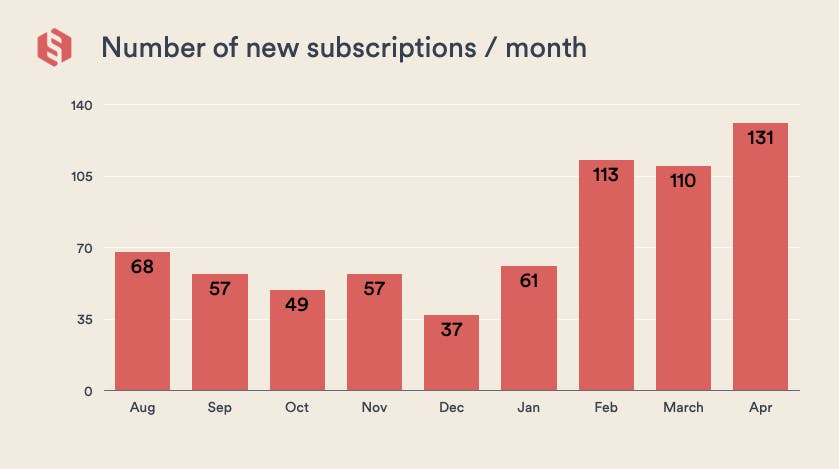
What changed?
There was no one silver bullet. Instead, we took many quick actions that together made a difference. We established a cross-team growth group that met every week to analyze our situation, brainstorm experiments, and execute them quickly.
In hindsight, I think these were the five most impactful things we did:
Changing our product onboarding to emphasize testing out the key functionality and learning how the marketplace works before getting to work with the setup.
Removing our freemium offering. The impact of going from a “free-forever” Build plan into the current $39 per month (with a 14-day free trial) on our bottom line is negligible, but it seems to be very impactful that we encourage founders to maintain momentum and get their ideas out into the world.
Creating new pricing plans that better match our customers’ business journey and offer them the key features they need at every stage.
Reacting to customer feedback quickly. We initially built a system that allows us to ship new, impactful features quickly. This is reflected in Sharetribe’s architecture, our system for recording and analyzing feature requests, and our “data warehouse” where we track our entire funnel.
The initial response to the new Sharetribe was a disaster.
A big splash marketing launch. We launched the new Sharetribe on Product Hunt in January 2024. We finished number 2 for the day, out of nearly 150 products that launched that day, with more than 1,000 votes (if yours was one of them—thank you!)
Even though this 2.5-year period was grueling, I believe it also left memories that people who were involved will look back on fondly. The success we saw in 2024 feels all the sweeter because we fought for it together.
Why being profitable matters
Sharetribe’s ownership structure is unusual. We’re steward-owned, and the active team holds all voting shares (except for one, held by the Purpose Foundation).
This structure guarantees we stay focused on our mission of helping founders launch marketplaces. However, it doesn’t allow us to raise traditional venture capital. The Sharetribe we’ve built can’t exist long-term without being profitable.
At the same time, 2.5 years of decline really showed us the strength of running an independent, profitable business.
When the struggle started, we were entirely funded by our customers. We fell below the break-even line and took out a loan, but we always had more than 16 months of runway.
With VCs onboard, the story would likely have ended differently. In 2020–2023, startup funding dried up. It’s not certain that the now-cautious VCs would have taken an interest in saving our company.
It’s not even certain we would have gotten far enough to raise funding. If investors had been in control, they likely wouldn’t have had patience with 2.5 years of decline. Sharetribe would probably have been sold or turned into a "cash cow" by cutting off R&D, outsourcing customer service, and so on. This happens to many mid-sized SaaS companies that stop growing. I used to get monthly messages from investors who wanted to buy such businesses.
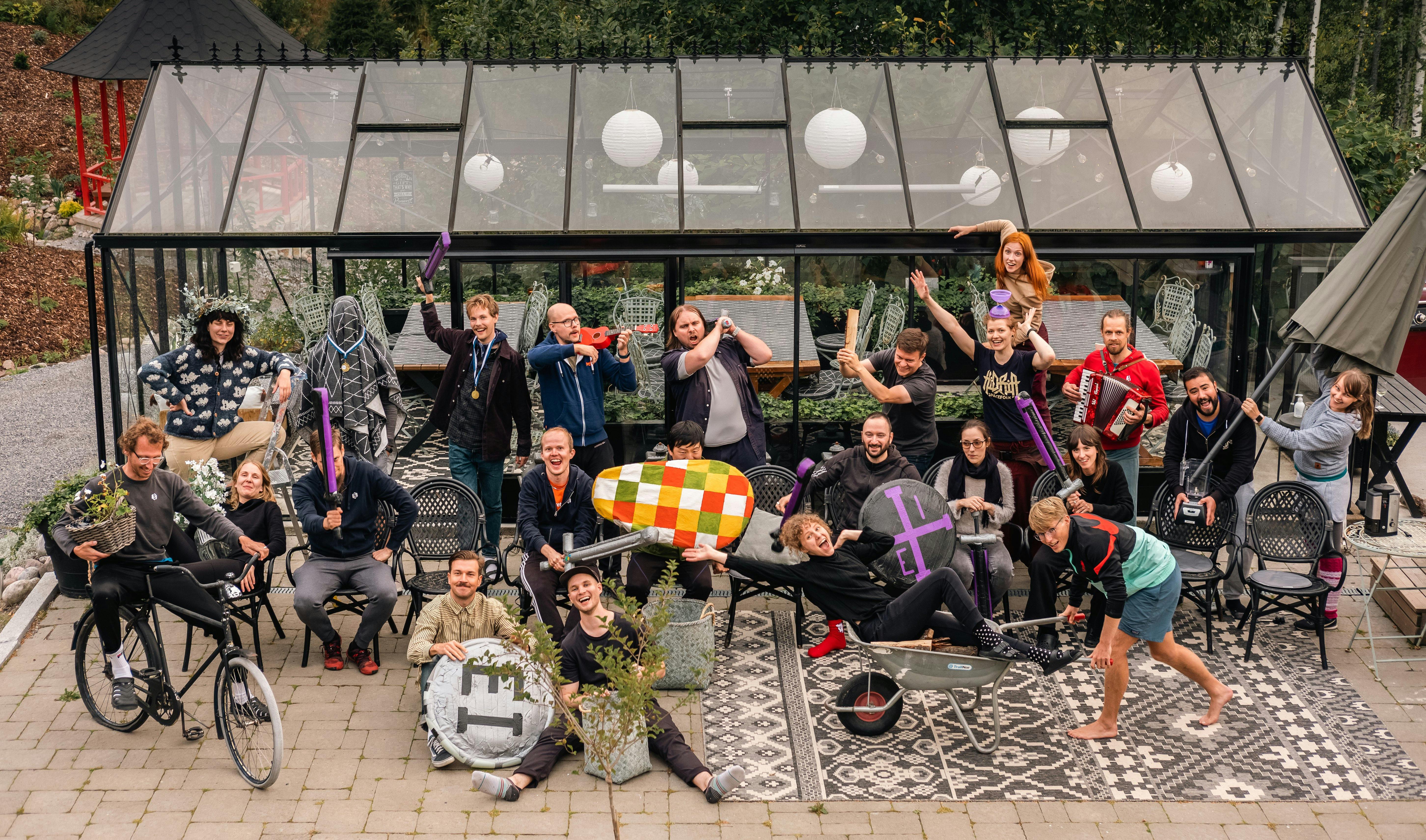
I also believe our independence kept our core team together through these hard times. Everyone felt in control. We had an inspiring plan we’d created together, enough runway to figure things out, and a company and culture worth saving.
When the trouble started, the Sharetribe team consisted of 19 people. Fifteen of us are still here today. I’m certain that if more people had left, I’d be writing a very different kind of blog post today.
What’s next
Sharetribe is again a securely profitable company, and so far, 2025 looks bright.
But our goals stretch beyond profitability. In 2018, Sharetribe raised €1.1M in equity crowdfunding to enable our transition to our steward-ownership structure. We raised this funding with a capped returns model: we're committed to returning each investor their investment 5X.
Sharetribe as you know it today wouldn't exist without the trust of the hundreds of crowdfunding investors who took a chance on a company that does things very differently. We want to honor our commitment to them, and that requires strong growth and profits.
Ultimately, though, profits are only a means to an end for us. That end is our mission to democratize platform ownership.
Today, the world of online marketplaces is still dominated by a small number of Silicon Valley giants that extract way too much value from their users to the benefit of a small number of wealthy individuals. We want to change this by making marketplace technology accessible to everyone, so founders around the world can create platforms that distribute wealth more evenly and put their profits back into their local communities.
We foresee a world where a significant amount of the world's online commerce happens through such niche platforms, powered by Sharetribe. We're still a long way from that vision becoming a reality, but that's where we're going, one marketplace at a time.

